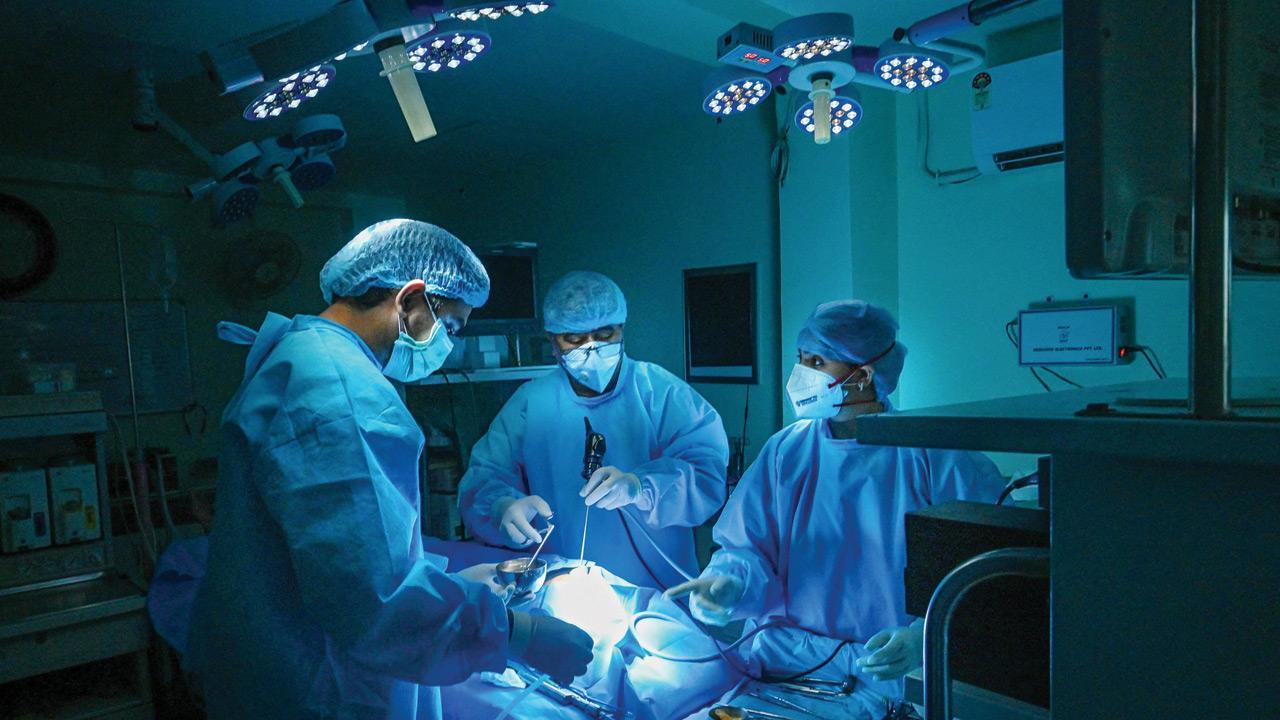Laparoscopic removal of the gallbladder is conventionally performed with 4 cuts

Representation Pic
A 46-year-old woman with inverted organs has got a new lease of life after doctors here conducted a successful laparoscopic gallbladder surgery via a single incision (one-port), instead of the conventional four ports. This is the first time such a successful surgery for gallbladder has been performed through one port in India and only the third such surgery performed in the world as per the available medical literature, said Fortis Memorial Research Institute, Gurugram in a statement on Tuesday.
ADVERTISEMENT
The woman, hailing from Karnal in Haryana, had a rare congenital condition where her abdominal organs were translocated in the reverse positions known as Situs Inversus (the right-side organs on the left and left side organs on the right). Situs Inversus leads to difficulties in diagnosis and surgical treatment of abdominal conditions demanding more skill and preparation on the part of the surgeon
She was admitted at Fortis Gurugram with complaints of recurrent pain in the upper left side of the abdomen. Her ultrasound reports revealed stones in the gallbladder, which was situated in the left upper abdomen (instead of being on the right side). In addition, the appendix was also on the left side (instead of right). Her stomach sigmoid colon and her heart were on the right side instead of being on the left. This condition is known as Situs Inversus with dextro-cardia.
“We operated and removed the gallbladder in the patient via a single port laparoscopic surgery leading to good recovery and superior cosmetic results. The surgical treatment for such a rare condition becomes particularly challenging in advanced laparoscopic procedures,” said Dr Ajay Kumar Kriplani, Director, Minimal Access Bariatric and GI Surgery at Fortis, in the statement.
“Laparoscopic removal of the gallbladder is conventionally performed with 4 cuts (ports). In this case, we removed the gallbladder with a single port laparoscopic surgery which is our preferred method with experience of thousands of such surgeries leading to good recovery -- lesser pain, scarring and morbidity,” Dr Kriplani added.
He further explained that for normal laparoscopic gallbladder removal surgery, the surgeon stands on the left side of the patient along with a camera person and the monitors are placed on the right side. But in this case, due to Situs Inversus, the doctor stood on the right side of the patient and the monitor was placed on the left. “A single 1.2 cm cut was made in the belly button through which telescope and instruments were inserted and the gallbladder was removed through the same cut,”Dr Kriplani said.
Situs inversus totalis (SIT) is a rare congenital abnormality characterised by a mirror-image transposition of both the abdominal and the thoracic organs. This is a global defect of situs orientation and failure to generate normal left-right asymmetry. Frequency of situs inversus is 1:10,000 to 1:20,000 and is more frequent in males.
“Performing laparoscopic surgery for mirror-image anatomy is rare and a challenging process, owing to reverse placing of instruments, (left sided instrument to right of telescope and vice versa) orientation and dissection during the procedure for a right-handed surgeon. This gets all the more difficult when a single incision surgery where only one cut is made, and the instruments are closer to each other than conventional 4 port surgery,” Dr Kriplani said.
He noted that clinically, situs inversus is asymptomatic and only a medical imaging can help clarify the diagnosis. The woman was discharged after two days and is in stable condition now, the doctor said.
This story has been sourced from a third party syndicated feed, agencies. Mid-day accepts no responsibility or liability for its dependability, trustworthiness, reliability and data of the text. Mid-day management/mid-day.com reserves the sole right to alter, delete or remove (without notice) the content in its absolute discretion for any reason whatsoever
 Subscribe today by clicking the link and stay updated with the latest news!" Click here!
Subscribe today by clicking the link and stay updated with the latest news!" Click here!







